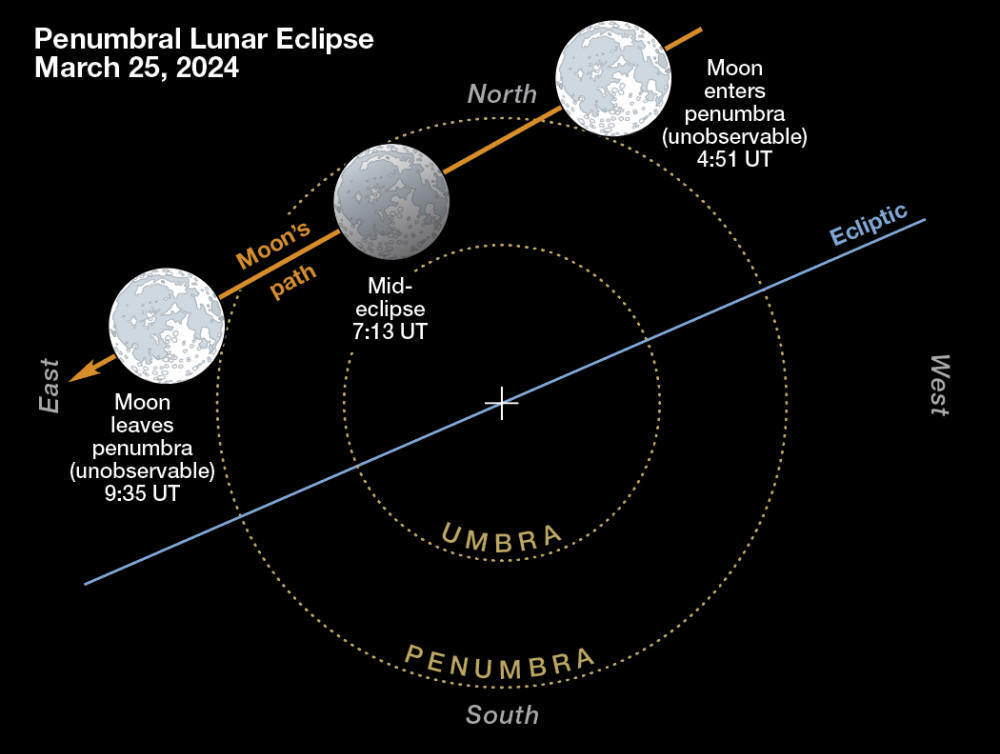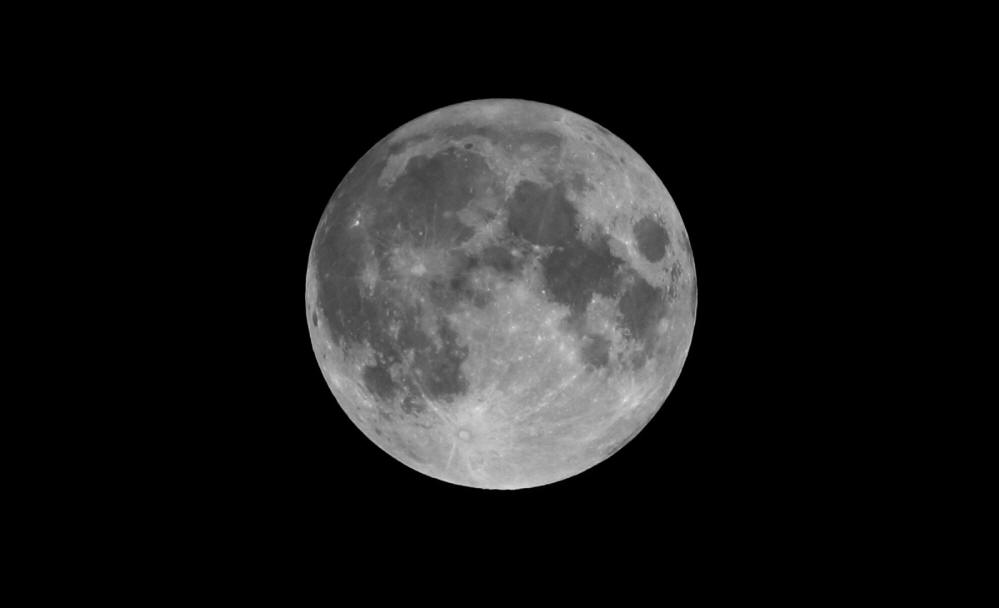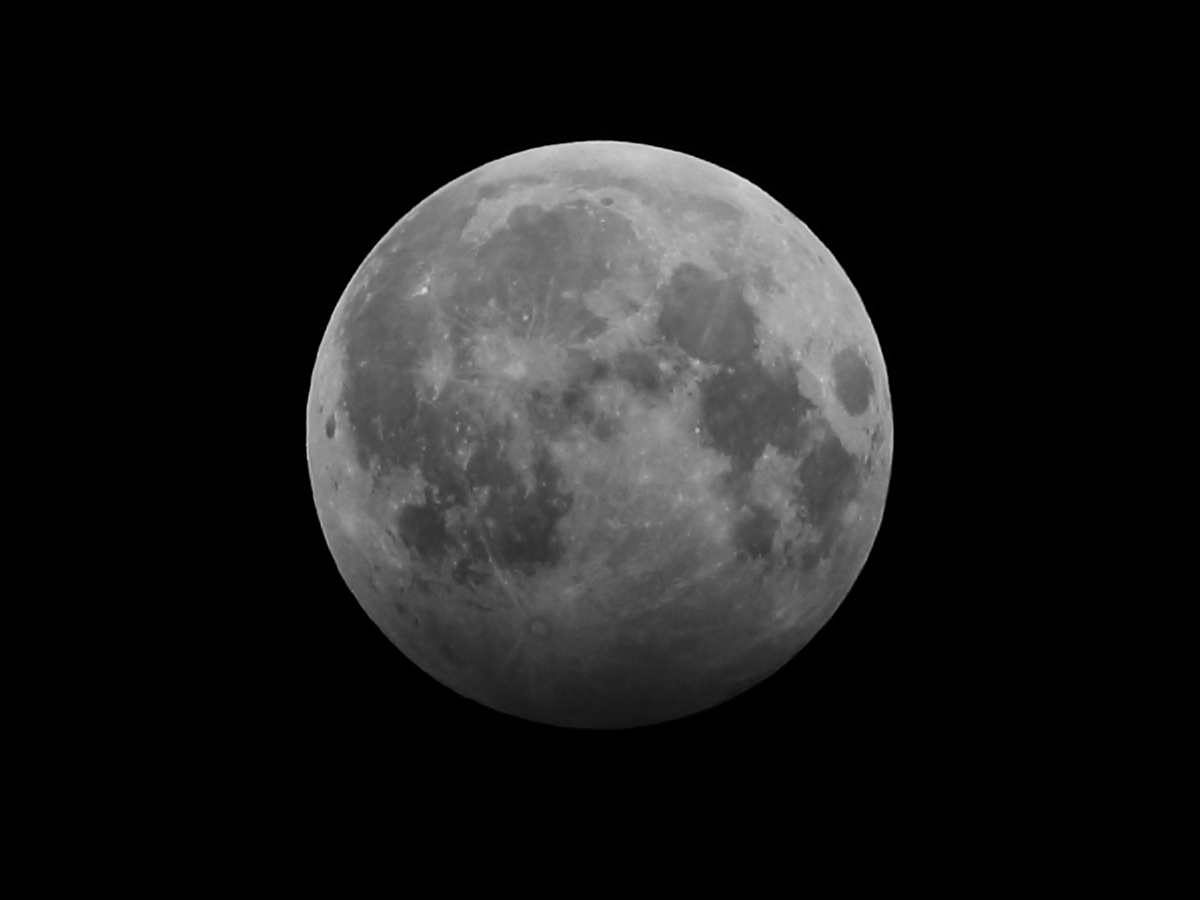Penumbral Lunar Eclipse
March 25, 2024
Here's the Moon
on
March 25, 2024,
at 3:13 am EDT, the mid-point of a deep (about 96%) penumbral eclipse,
but not quite deep enough to be a partial eclipse, where the
lunar limb would enter the darker umbra of the earth's shadow as
shown in the
Sky & Telescope diagram below from this
Bob King online article. Here's more from
Time & Date and here's
Fred Espenak's NASA datasheet.
This is a single raw frame taken under a clear sky from Maple
Shade, NJ, with a Canon
EOS RP DSLM camera and a Canon 400 mm f/5.6L telephoto lens on a
fixed tripod. It was exposed 1/800 second at f/11, ISO 800 (the
"Looney
Eleven" rule-of-thumb for lunar exposure) and set to
monochrome mode. Using Canon's Digital Photo Professional 4,
contrast was enhanced and it was cropped to a 4:3 ratio from
about 20% of the original frame dimensions for a field 1.0° wide
x 0.75° high, then converted to this JPEG.
Visually, the darkening towards the bottom of the lunar disc was
barely detectable with unaided eyes. Had I not known there was
an eclipse in progress, it probably would have gone unnoticed.
With 15x56 binoculars, the darkening was slightly more apparent.
The last penumbral eclipse I observed with some diligence was on
July 5, 2020. It wasn't very deep and I saw no real effect as
described farther down the page.

Penumbral Lunar Eclipse
July 5, 2020

|
The Earth's Moon entered the outer portion of the Earth's shadow, the penumbra, late on the evening of July 4, 2020, about 11:04 pm EDT, and reached maximum eclipse at 12:30 am on July 5, but only about a third of the Moon (at the top) was covered, so the eclipse was barely visible at best. Full Moon would occur at 12:44 am and the Moon would transit the local meridian at 1:06 am, 25° altitude (1:00 am is astronomical midnight during Daylight Time). Indeed, this image (with contrast increased), a binocular view and a view with unaided eyes all showed no real sign of the penumbra on the lunar disc to this observer. This corresponds with Fred Espenak's prediction in a Spaceweather article.
The image was captured on July 5, 2020, at 12:30 am EDT from my backyard in Maple Shade, NJ, using a Canon EOS RP mirrorless digital camera with a Canon 400 mm f/5.6L telephoto lens on a fixed tripod. It's a single raw monochrome frame exposed 1/800 second at f/11, ISO 800 (which coincidently corresponds to the "Looney Eleven" rule-of-thumb). Contrast was increased using Canon's Digital Photo Professional 4, then it was cropped to about a quarter of the original linear dimensions for field about 1.3° wide x 0.8° high and saved as a JPEG for this web page. |
Joe Stieber
SJAstro.org Home Page
